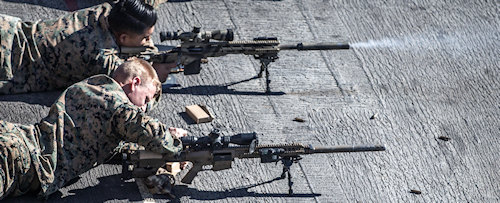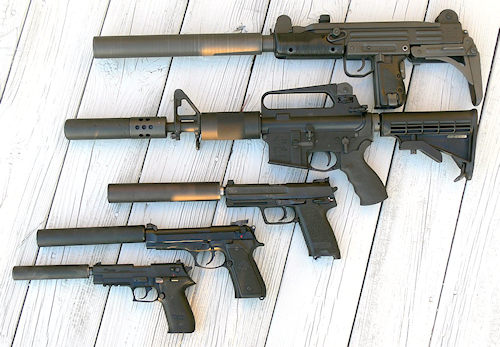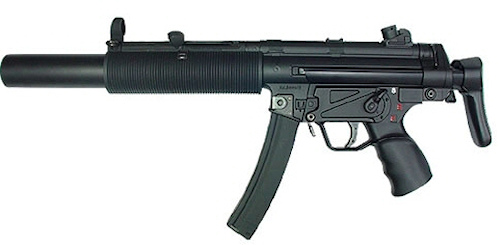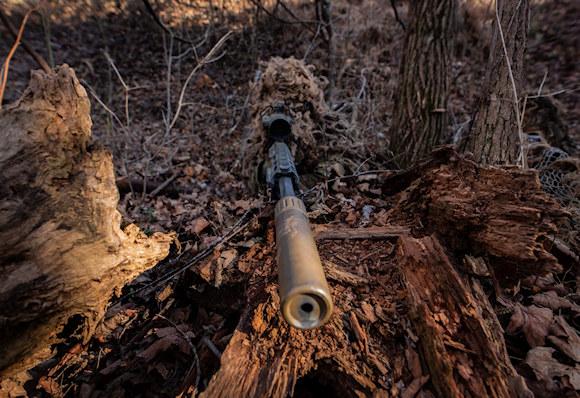Premise: in Italy, with the removal of very recent and emergency exemptions for night hunting of wild boars, building and purchasing "silencers" is prohibited by law (to be honest there is no mention of "detention"... but let's move on).
Recently, together with the director, we had the opportunity to shoot at a range long range with some medium caliber rifles, such as you've probably seen it on the Online Defense YouTube channel ("DOT" column).
We take this opportunity to explain a particular and often unknown aspect of "Operational Shooting": the reduction of the sound of a firearm, that is, when you want or need to adopt special solutions - mechanical (the silencer), chemical (the cartridge) - aimed at "changing" the sound waves emitted by the projectile and the burnt gases of the cartridge at the moment of launch from a firearm a certain speed, stressing that eliminating themAs far as I know, this is not possible.
A shooter, for reasons of stealth or even simple comfort, will try to obtain the best compromise between the dynamic/ballistic performance of the projectile (velocity, terminal energy, stopping power) and the least possible noise at the moment of the shot.
Energy and stopping power however, they are intrinsically linked to the speed of the projectile (as well as to its mass) which, if it exceeds that of sound when the projectile exits the muzzle, will cause a significant sound wave, caused by the breaking of the air molecules surrounding it (like a plane exceeding Mach 1, the speed of sound, or the tip of a whip, the end of a helicopter rotor blade... and more). To these will be added those emitted by the gases behind, also very fast and therefore very noisy, plus the controlled detonation of the powder and the primer in the combustion chamber (similar to that of a firecracker).

The silencer cannot affect the speed of the projectile, which will be given by the type and quantity of powder loaded into the case, as well as by its geometry and weight, as it "screws" along the rifling of a given type of barrel, but only on the reduction of the velocity of the burnt gases which determine its thrust. Subsequent containment chambers will engage the gases as they travel just outside the muzzle, reducing their speed and, consequently, the noise they emit. Furthermore, through precise design and construction, it must avoid disturbing the initial external thrust of the nose cone (think for example of how much the rear and lateral vortex flows of air, not just the frontal aerodynamic resistance, influence on a car launched at high speed, not to mention a plane or a missile.
La correct projectile velocity (given the silent use that we would like to obtain), as mentioned above, will instead be determined by a thoughtful (and widely tested) choice of the quantity and type of powder to be used in the cartridge, which in this case will become subsonic, also taking into account the its weight and shape, always without forgetting the influence of the type of rifling and the length of the barrel.
Obviously the different type of weapon to which the "silencer" is used must be taken into consideration: a pistol, semi-automatic or drum, a carbine, bolt action or semi-automatic, or an automatic machine gun, each with its own sound signature, given by the construction technique of the loading system and the length of the barrel.
 We have therefore certainly understood that it is not a question of placing a simple "tube" (or, as seen in certain films, a plastic bottle taped to the top of a joint). It is necessary, as always, to know the system used (weapon and cartridges) with absolute precision, in order to have a weapon that allows the safe installation of a suppressor (or compensator). Weapons of military design, with versions also for the civilian market, or hunting and shooting weapons of foreign construction above all (where suppressors are allowed if not even recommended - see France), but today also indigenous, already include a factory thread on the sprint.
We have therefore certainly understood that it is not a question of placing a simple "tube" (or, as seen in certain films, a plastic bottle taped to the top of a joint). It is necessary, as always, to know the system used (weapon and cartridges) with absolute precision, in order to have a weapon that allows the safe installation of a suppressor (or compensator). Weapons of military design, with versions also for the civilian market, or hunting and shooting weapons of foreign construction above all (where suppressors are allowed if not even recommended - see France), but today also indigenous, already include a factory thread on the sprint.
As can be seen by going to any shooting range, the initial speed of a normal firearm projectile is always beyond or very close to supersonic speed (for rifles it is even double, if not triple).
Speaking of semi-automatic pistols, whose use with suppressor is almost exclusively for military use, in my opinion, the two best "silencerable" calibers are the .22LR, used in fact in the field of special operations (I would rather say "special": ask the Mossad, among others, of his famous Beretta mod. 70), and the .45 ACP of the historic Colt 1911, certainly "slow" when compared to a 9x19 Parabellum, but equipped with great stopping power, given the mass of the projectile, which is also not designed tactically in some operational contexts even by our SFs. The 7.65 it's a bit like the "Switzerland" of silenceable calibers, and personally its "ballistic neutrality" doesn't convince me much.
For use on a semi-automatic pistol, I consider it to be very famous 9x19 Parabellum too fast (370 m/s) for silenced use, despite knowing that firing in sound suppression tactically and operationally involves locking the slide, and therefore firing in a single shot. Therefore, if in action you want or can have only one gun, even for a possible "special" use, then the situation changes in its favor.
Although the . 38 special seems equally manageable, the fact that it is used from a revolver makes it subject to sound dispersion, caused by the drum-barrel gap, as for other calibers of drum guns. I am aware of Russian and ex-Soviet/Warsaw Pact pistols that are described as even "whispering", such as the Tokarev in cal. 9x18, but I have never been able to observe and "listen" to them (I would even say "fortunately") and therefore I will not talk about them in this context.
 Coming then to automatic machine guns, above all the famous MP5, chambered with a 9 Parabellum NATO standard, I can say that it unquestionably represents the best compromise between ballistic performance and noise emission. The metastable roller reloading technology, the "right" length and rifling of the barrel, the suppressor designed and manufactured with Teutonic mastery and precision, make the MP5 still the best possible solution in the CQC (Close Quarters Combat - close combat).
Coming then to automatic machine guns, above all the famous MP5, chambered with a 9 Parabellum NATO standard, I can say that it unquestionably represents the best compromise between ballistic performance and noise emission. The metastable roller reloading technology, the "right" length and rifling of the barrel, the suppressor designed and manufactured with Teutonic mastery and precision, make the MP5 still the best possible solution in the CQC (Close Quarters Combat - close combat).
I had the opportunity to test an MP5 with "special" ammunition, that is, rather "quiet". Fantastic, but... one cartridge was so "silent" that it did not expel the bullet from the barrel, which stopped inside it, so much was attempted to optimize the launch charge. Let's say that, operationally, this is not the maximum to aspire to. This episode says a lot about the research behind sound reduction operating systems. Reliability, first and foremost, as always.
With standard ammunition the noise is quite similar to that of a non-silenced .22 LR caliber pistol, therefore acceptable for short shooting sessions carried out without headphones. I would like to point out, however, that in this case, i.e. when shooting with good .22 LR ammunition, what bothers me a lot after a while, especially indoors, is not so much the noise, but a very noticeable overpressure in the eardrums (we'll talk about this another time). , given that this also happens with technologically advanced compressed air weapons available today).
Read the second part Reducing the sound of a shot: each weapon "has its own voice"
Photo: US Army / US Marine Corps / web












